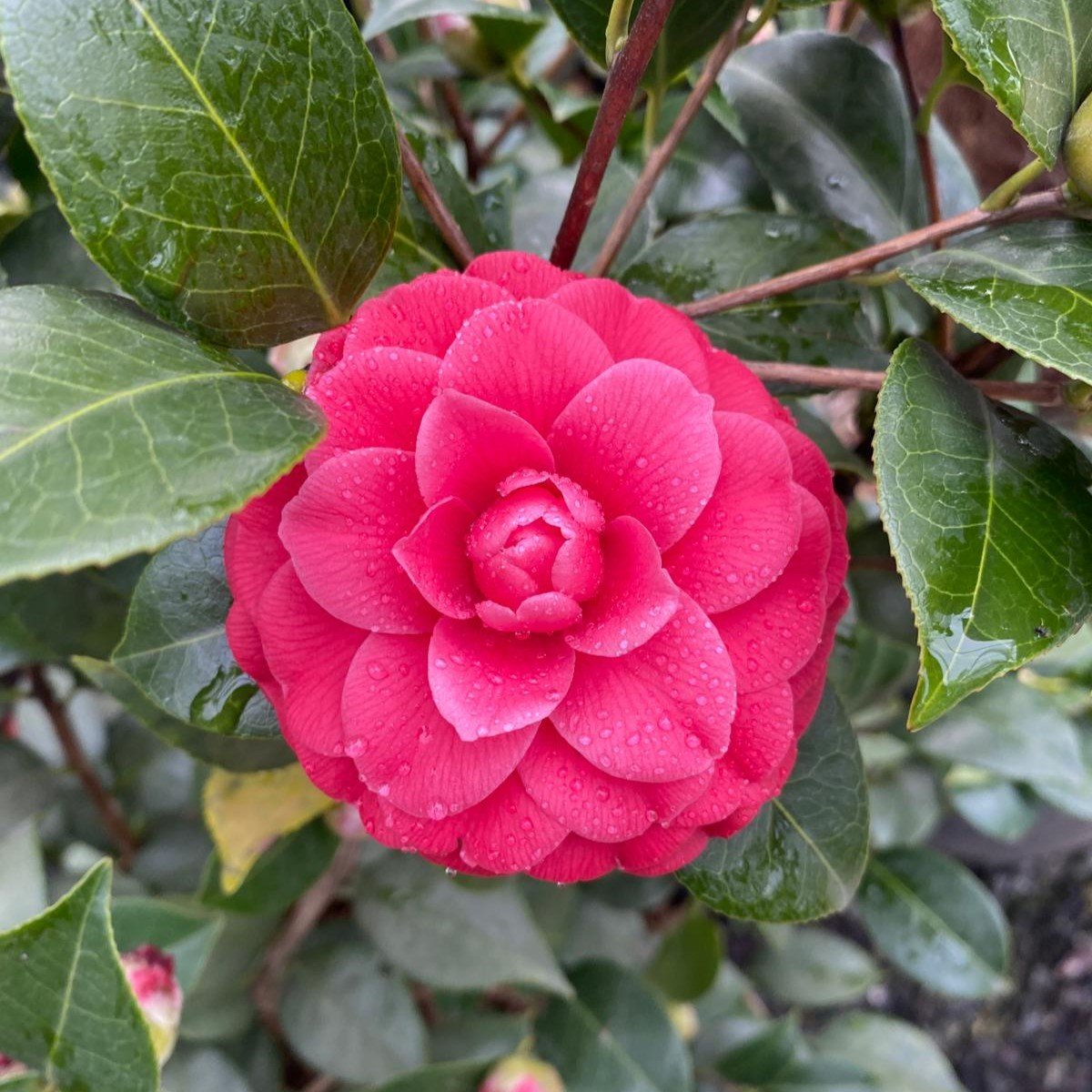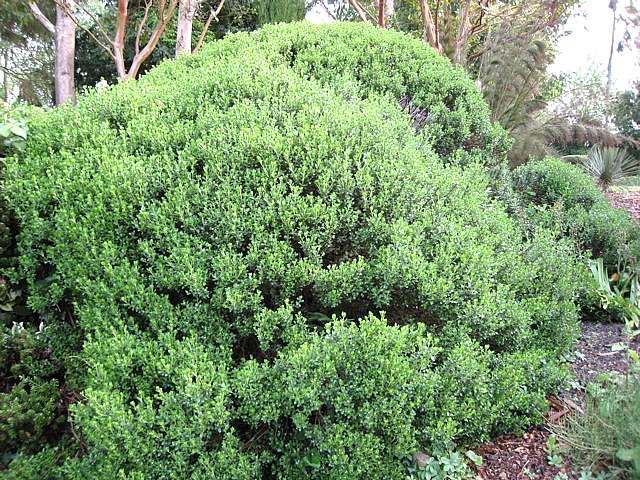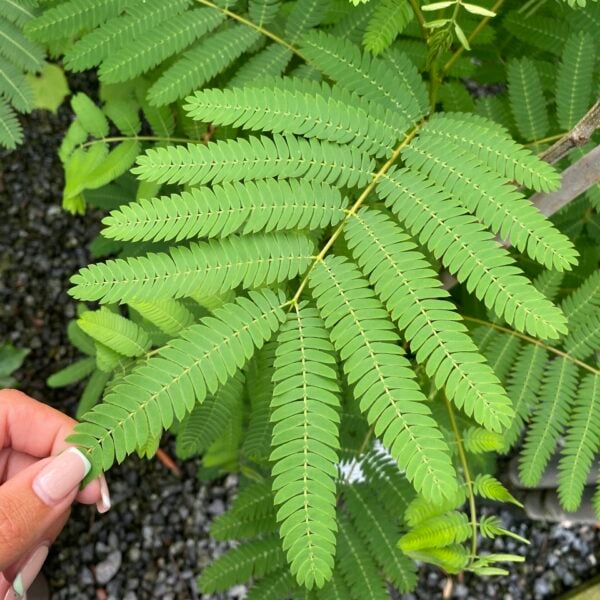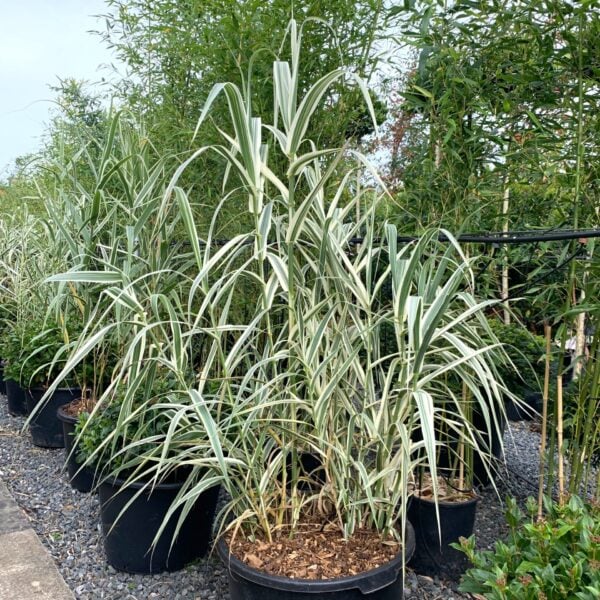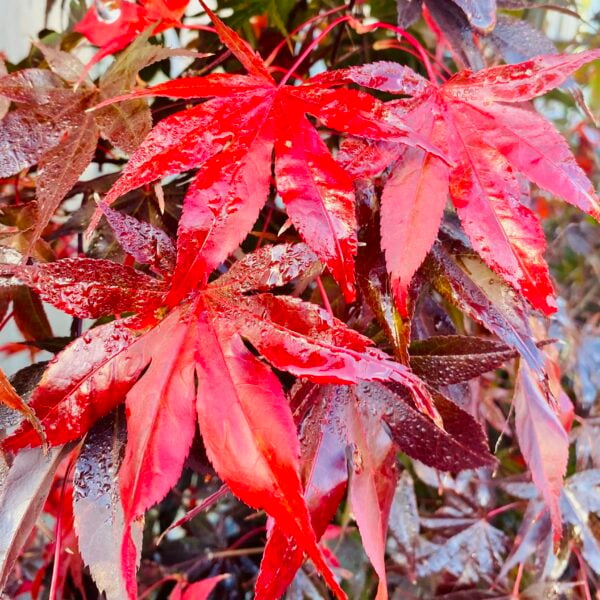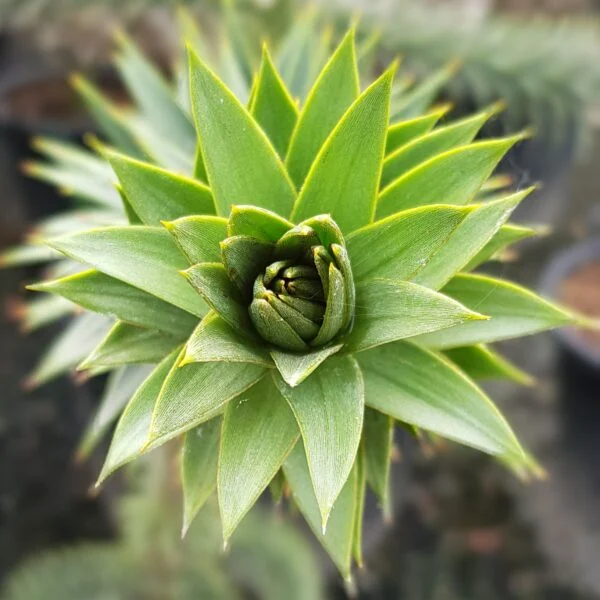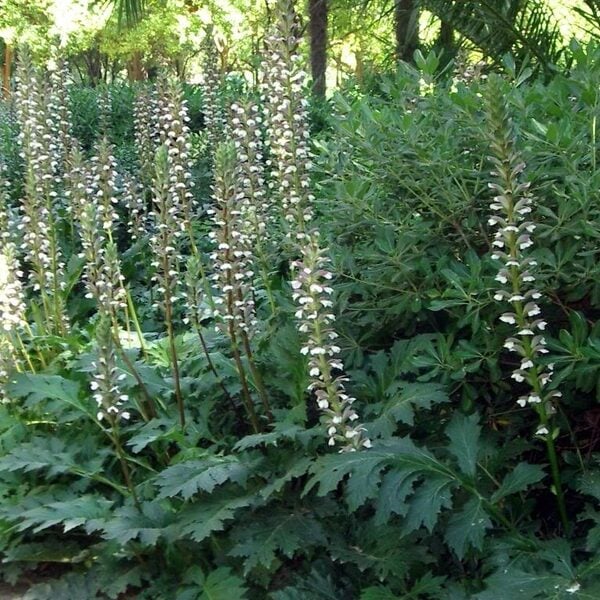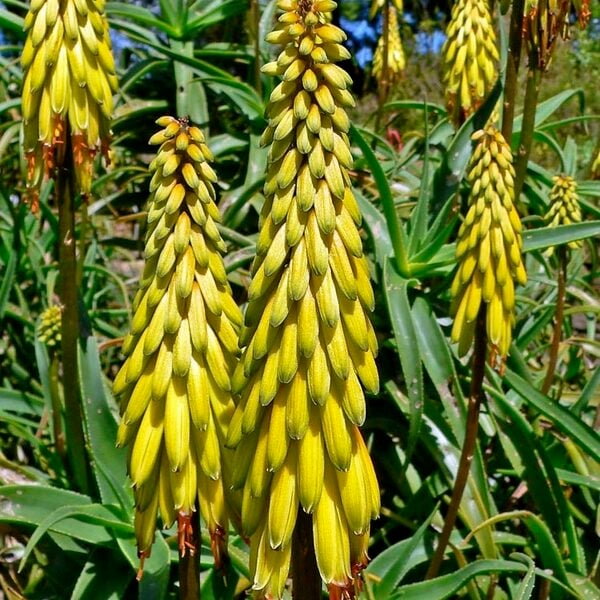Camellia japonica ‘Black Lace’
Deep blackish-red double flowers in early spring. Can get to 8ft after many years. Please contact us for stock availability and sizes.

Hardiness level Green
Camellias are famed for their spring flowers but they also have beautiful thick shiny leaves and - over the years - can be trained into shapely little trees. In Japan they even use the small leafed variety (Camellia sasanqua) to make Niwaki (big bonsai). Older specimens have nice smooth grey bark with coloured patches. Slow growing to 15ft after 25 years or more but easy and reliable as long as they're in light shade (full sun bleaches the leaves) and in neutral to acid soil with a high organic content. They're not keen on chalky soil but are often lumped together with rhododendrons and azaleas which is incorrect. They're less fussy than rhododendrons and azaleas and also more tolerant of high temperatures. The tradition is to avoid having them exposed to the rising sun. Nothing to do with facing their homeland - it's just that morning sun on frosted flowers will spoil them, causing the edges to brown.
When first introduced from the orient it was supposed that they were sensitive to frost and were always grown in greenhouses by the Victorians and Edwardians. The story goes that a keen gardener who was a soldier in the First World War came across a bomb damaged greenhouse in Belgium in 1917 following the harsh winter of 1916 and yet they'd thrived despite the lack of protection. Word got back to Blighty that even the Bosch couldn't kill Camellias and from then on they've been grown outside. Can that really be true?! I can believe it. Gardeners can be an unadventurous lot sometimes.
N.B. When clipping several plants with the same tool, have a bucket containing a 5% bleach solution and swish your blades around for 30 seconds between plants to sterilise them. This will help avoid the chance of cross contamination of disease.
As with all woody plants, plant high, exposing as much of the taper at the base of the trunk as possible. Allowing soil to accumulate round the base of a tree can be fatal. Keep very well watered when first planted.
Additional Information |
|
|---|---|
| Soil Type | Clay, Dry / Well Drained, Not good on chalk (Ericaceous), Sandy, Soggy /Damp (Plant high and you can get away with murder) |
| Light | |
| Plant Type | |
| Continent of Origin | |
| Specialist Plants | |
| Features | |
| Tree Size | |
| Situation | Coastal, Mild City Gardens, Plants for Pots, Sheltered Garden |
| Flower Colour | |
| Hardiness | |




